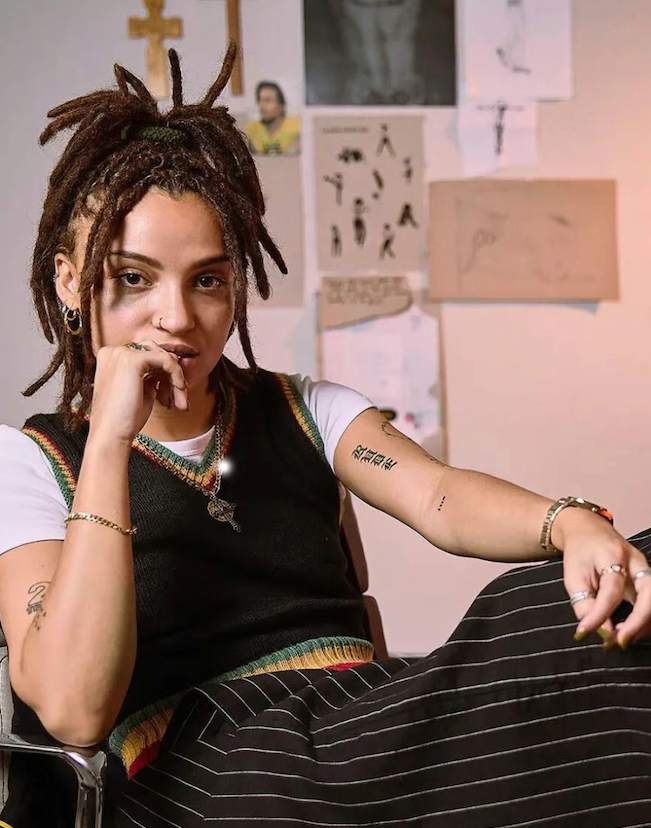
The Turner Prize is considered the highest honor in the contemporary art world, both in the UK and globally. Following the announcement of the 2025 Turner Prize shortlist by the Tate Gallery, an exhibition of the shortlisted artists opened at Cartwright Hall Art Gallery in Bradford, UK, on September 27, showcasing their calls for peace, their allusions to violence, and their understanding of their own identity.
The four winning artists are Nnena Kalu, Rene Matic, Mohammed Sami, and Zadie Xa. In Rene Matic's installation, a 16th-century Lutheran hymn and the sound of church bells create an irreconcilable clash with small photographs on low shelves. The sounds of Nina Simone and bell hooks drift through the air. As Rihanna sings "Lift Me Up" a cappella, viewers can flip from snapshot to snapshot, uncovering stories in nightclub scenes, parades, and street graffiti.

Renée Mattick's exhibition wall
All of these scenes are drawn from Mattick's life. These works, interwoven with personal and political sensibilities, evoke Nan Goldin and the lives lived and documented. Renée Mattick, the 28-year-old artist, reflects on her similarities with Goldin in an installation that is both rich and austere, restrained and confessional.
In the exhibition hall, a massive chintz hangs suspended in the air, seemingly drained of energy and faith. On one side, it reads "NO PLACE," and on the other, "FOR VIOLENCE." While the banner repeatedly calls for peace in response to the shooting of Trump during his 2024 campaign, it can be interpreted in more than one way. The life of this mixed-race, working-class artist interweaves the private and the public, peace and protest, friendship and family, and contested notions of national identity and belonging. And embedded within the pink-brown walls, Mattick's collection of black dolls stares out. All this forms a frozen autobiographical tableau, unresolved, ambiguous, yet caught in the middle of everything.

Renée Mattick
Artist Mohammed Sami's paintings are equally disturbing, serving as metaphors for violence. His images: shattered pottery beneath an exploding sky; clothing suspended in water; a patch of earth trampled by horse hooves; something or someone being dragged from a sunflower field; palm trees swaying in the wind amidst an orange haze; green laser beams flickering through the bushes. These images resemble something from a laggy video game.

Mohammed Sami
Last year, several of Samy's paintings were hung among the Old Masters and heirlooms at Blenheim Palace, depicting the collision of past imperial might and modern violence. Samy, who began his career in Baghdad, has always excelled at suggesting disaster and violence in his deserted paintings, much like Luc Tuymans. However, his recent work has become more technically uncanny, drawing parallels with the works of Anselm Kiefer and Miquel Barceló. Rather than using stereotypes to depict the Iraqi conflict, he uses painting to indirectly address war, memory, and loss. His paintings recount memories triggered by common, everyday objects during his migration to Sweden as a refugee from his native Iraq.

Paintings by Mohammed Sami
Inside the exhibition hall, visitors can witness an installation by Vancouver-born, Korean artist Zadie Xa, accompanied by the sounds of tinkling bells, whale songs, the whirring of radio waves, the chimes of wind chimes, and the persistent hum of old-fashioned telephones. All these sounds originate from a suspended giant artificial shell. The artist bathes the walls in underwater light. Small shaman bells coil like conch shells on octagonal platforms, which shimmer with rainbow-like light, and the entire scene is reflected on the exhibition floor. Paintings cover the walls, depicting figures from Korean folklore, swimming dolphins, squid, and turtles. The work's title, "Deep Sea Echoes Confess in Moonlight: Your Ancestors Are Whales, and the Earth Remembers Everything," says it all.

Zadi Xia's Installations and Paintings
Ten large-scale sculptures hang suspended in mid-air, allowing viewers to traverse them. Artist Nnena Kalu's method of creation is a repetitive process of binding, wrapping, and knotting. Kalu uses tape, plastic wrap, recycled plastic, fabric, cable ties, cardboard, and scattered artificial textiles to create works on a simple skeleton. Her process of continuous layering and repetition relies on the artist's focus and perseverance. They tower over the viewer, sometimes reaching outward, sometimes roaring inward. They are bound, sometimes liberated, and full of change. These figurative forms possess a complex physicality.

Naina Kalu's installation for the Turner Prize.
It's often said that an artist possesses a natural strength and drive. Born in Glasgow in 1966, Kalou is an artist with autism, learning disabilities, and limited verbal communication. Her primary assistant, Charlotte Hollinshead, has been collaborating with her since 1999, with the support of the visual arts organization Actionspace, and insists she is her honored assistant.
Kalu's sculptures are often compared to those of Phyllida Barlow and the fiber art of Sheila Hicks. One might also consider the complex, multi-layered sculptures of American artist Judith Scott (1943-2005), who similarly created under severe physical and mental constraints, ultimately finding her own path. Repetition and compulsion also underlie the prolific output of German artist Hanne Darboven (1941-2009), who created within a strict, self-imposed system and constraints.

Naina Kalu at work
Kalu's work, both in her paintings and sculptures, oscillates between the given and the optional. The repetitive spirals in her paintings are shaped by her pauses, yet also by fluidity and shifting, reflecting how the body registers its actions on paper.
The 2025 Turner Prize exhibition runs from September 27 to February 22, 2026.
The Turner Prize winner will be announced during the exhibition.
- GikTyDGesiL09/30/2025
- kOlRNVVObnA09/29/2025


